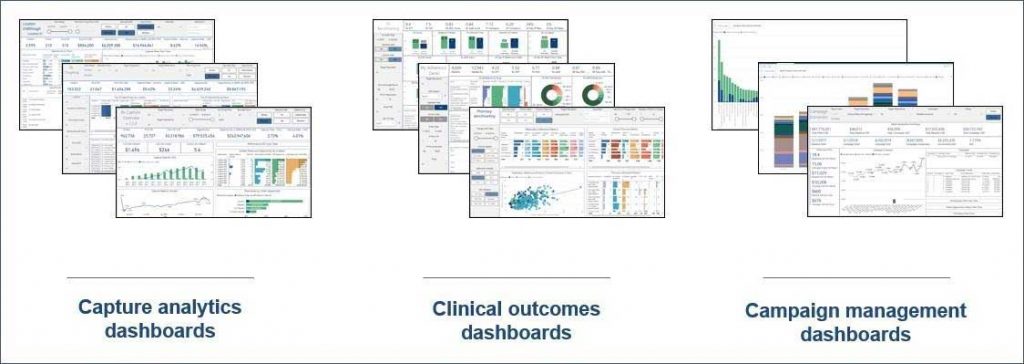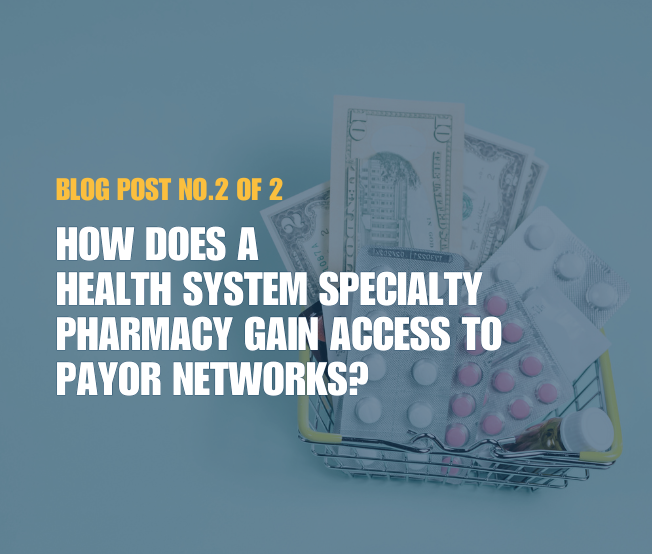
UCSDH Partners with Loopback Analytics and Acentrus Specialty to Unlock Better Patient Outcomes and Improve Financial Results
Over the past year, University of California San Diego Health Specialty Pharmacy has used the Acentrus Specialty network and the Loopback Analytics platform to drive significant results. After identifying several opportunities for growth, UCSDH chose to focus on rheumatology. One year later, specialty pharmacy management reported that the capture rate for rheumatology clinics had tripled with improved financial results. As a result, UCSDH realized an ROI of 13x across a portfolio of campaigns in other disease states.
Background Health system EMRs contain a rich source for patient data that when analyzed efficiently, can dramatically improve patient care outcomes and result in increased financial results for a health system. Healthcare facility specialty pharmacies play an integral role in the patient care-pathway but making use of all the available data can be challenging. Collecting, transforming, and displaying data to find actionable insights is challenging, time consuming and resource intensive. The Loopback Rx platform provides data-driven solutions for specialty pharmacies by seamlessly integrating disparate data sets into easy-to-use visuals and actionable analytics. The platform offers a wide range of proprietary capabilities, including a master patient index, medication pricing system, sophisticated population tagging engine, and risk-adjusted comparison groups that result in sophisticated analysis enabling effective, actionable direction.
UCSDH – Acentrus and Loopback Partnership
In July 2019, UC San Diego Health (UCSDH) partnered with Acentrus Specialty and Loopback Analytics to more effectively leverage its own health system data to support the growing specialty pharmacy program, as well as to establish a connection between pharmacy activities and clinical and economic outcomes. UCSDH gained the visibility to matched orders and fills as well as leakage of specialty medications by clinic, physician, therapy, medication, and payer. Equipped with this new level of clarity, UCSDH specialty pharmacy sought to answer the following questions:
• What therapeutic areas represent the greatest opportunities for expansion?
• What is the true opportunity after accounting for payer access?
• How can UCSDH accurately monitor true leakage?
• How can UCSDH leverage its data to build a case for hiring new FTEs?
• How can UCSDH show that its patients’ prescriptions are being managed optimally?
Utilizing the Loopback RxCapture module, UCSDH specialty pharmacy management was able to baseline their economic performance across therapies and identify areas of opportunity for targeted growth. After accounting for payer access, UCSDH identified rheumatology, oncology, and cystic fibrosis as areas with significant growth potential.
Campaign Opportunity Identification
Specifically, rheumatology therapies were identified by Loopback’s Analytics platform to have a significant opportunity based upon actual drug availability and payer access. Not only did rheumatology have significant economic opportunity, but leveraging RxOutcomes, the UCSDH team was able to see clinical benefits as well. UCSDH’s rheumatology patients received their medications two days faster than patients who had their medications filled at outside pharmacies, one of many clinical advantages offered by UCSDH. To efficiently realize these opportunities, UCSDH narrowed their focus to a combination of specific rheumatology clinics, prescribers and/or medications. For example, UCSDH was able to determine that 80% of the total opportunity originated from three health systemrheumatology and arthritis clinics. Targeting these patients improved pharmacy economics and patient outcomes.
Campaign Implementation
UCSDH collaborated closely with the teams to develop and implement campaigns. These efforts focused on tracking the specialty pharmacy’s activities and progress towards increasing capture rate and improving other key performance metrics for each respective therapy. To accurately monitor true leakage, the team accounted for discontinued and canceled orders in the UCSDH dashboard, enabling UCSDH to focus on how referral patterns to its pharmacy changed over time. UCSDH could now be confident in how its efforts impacted true capture rates.
Campaign Results
One year after the Rheumatology Campaign was implemented, UCSDH specialty pharmacy management reported that capture rate had tripled which translated to improved financial results from the collaboration with Acentrus and Loopback. In aggregate, UCSDH has realized a ROI of 13x across its portfolio of campaigns. This methodology was utilized with additional campaigns in other disease states and have yielded similar results.
Gary Hagney, UCSDH Director of Ambulatory Pharmacy Services, shared, “We’re excited about our realized progress from our team’s efforts this past year, and we appreciated the critical role Loopback and Acentrus played in making that possible. This is a big win for our team, and we see lots of opportunity for continued improvement.”
UCSD, and the Acentrus/Lookback teams were able to effectively and efficiently identify specialty pharmacy opportunities and implement a focused pharmacy effort that resulted in significant increases in captured patient volumes and revenues.

Loopback modules referenced in this case study
1. RxCapture
RxCapture combines order and dispensing data to provide pharmacies with a comprehensive view of prescribed and filled activity. Complete with numerous analytics dashboards, the module enables specialty pharmacies to quantify true capture rates, adjusted for discontinued and re-routed orders. It also provides the ability to quantify activity and opportunity in the form of revenue or margin. Users can slice the data by disease state, medication, location, and even prescriber. Pharmacies can then identify, quantify, and prioritize opportunities within their health system.
2. RxOutcomes
RxOutcomes module provides medication adherence and clinical outcome measures for a defined patient registry. Target populations, such as rheumatology, are established to enable detailed analysis. Benchmark data also provides comparison of adherence and clinical outcomes for patients served by the health system specialty pharmacy vs. alternate distribution channels.

